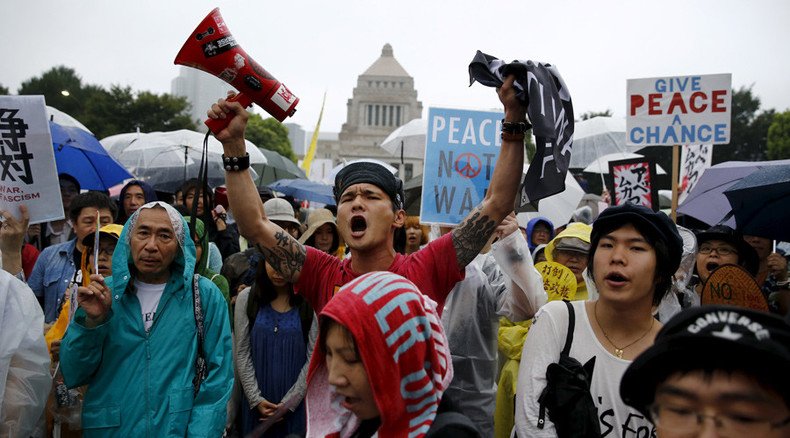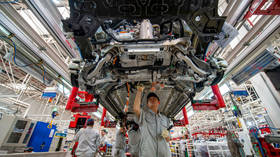Idea of ‘collective self-defense’ polarizing Japanese society

Japanese PM Shinzo Abe is playing on his right-wing base in an effort to alter the country's post-war constitution. But the move is politically polarizing as the protests taking place in the streets of Tokyo show, says James Corbett, editor of The Corbett Report, an independent news website.
Recent changes in Japan's military legislation have sparked protests across the country. Tens of thousands gathered throughout Japan to rally against the changes which allow the use of military force abroad to defend allies. Prime Minister Shinzo Abe says the measures are necessary to protect the country.
But the changes could see Japanese deployment overseas for the first time since World War II.
RT: How will this new legislation extend Japan’s military powers? What does the term collective self-defense actually mean?
James Corbett: For those who don’t know, since 1947, Japan has been committed through its post-war constitution to Article 9, which states that Japan renounces war and the use of the military for offensive purposes. The only reason for having a military in Japan since 1947 has at least ostensibly been for self-defense purposes which is why it’s called the Self-Defense Forces - though it’s the fifth largest military in the world and can be deployed in self defense or abroad quite easily.
So I think there has been something of a sleight of hand there. But regardless, it is a pretty large shift that’s taking place. It’s not a large shift on paper – on paper all that’s happening is that the Japanese government is attempting to redefine the idea of self-defense to include collective self-defense, the idea that if a Japanese ally is attacked or threatened with attack, Japan can deploy its Self-Defense Forces in aid of it. But potentially that’s a very large move for a nation that has thought of itself as primarily a pacifist nation for much of the past 70 years.
RT: But why now, this shift of focus?
JC: This comes down to a number of reasons. One is that it’s politically expedient. I think that the Japanese PM Shinzo Abe is playing on his base which is very much a very hard right-wing base that is nationalistic and militaristic and very much approves of this. It’s also quite politically polarizing as the protests that are taking place right now show, but it does play well to his base.
But perhaps more fundamentally this also plays into a larger geopolitical shift that is happening in the Asian-Pacific region with the US and its Asian-Pacific pivot and the growing militaristic intentions of China and the naval disputes, for example, in the East China Sea and the South China Sea. There is a lot of forces that are coming together to give rise to this rising militarism and nationalism. But the number one underlying reason for all of this as always is defense spending and there are a lot of people who are making a lot of money off of this, including of course the armaments industry not just obviously in Japan, but in the US where a lot of these supplies are being purchased from. Last year the global defense spending actually dropped but it rose in the Asian-Pacific region by five percent because the Asian-Pacific region continues to be a source of increasing income for the defense industry.
The statements, views and opinions expressed in this column are solely those of the author and do not necessarily represent those of RT.
LISTEN MORE:
The statements, views and opinions expressed in this column are solely those of the author and do not necessarily represent those of RT.












